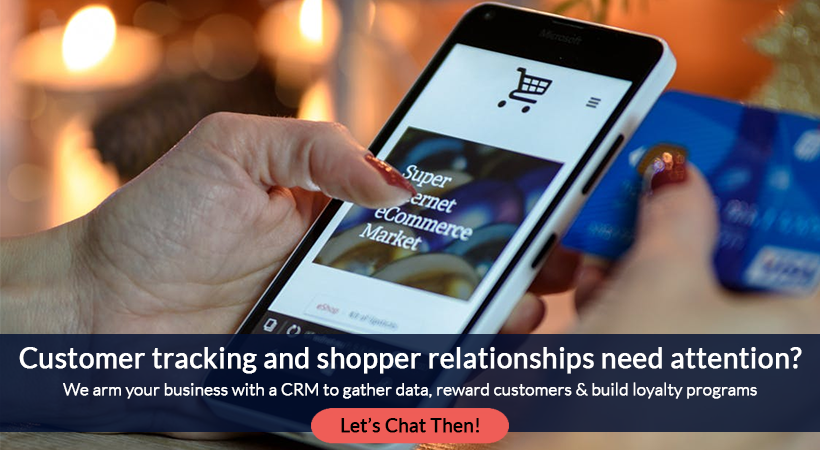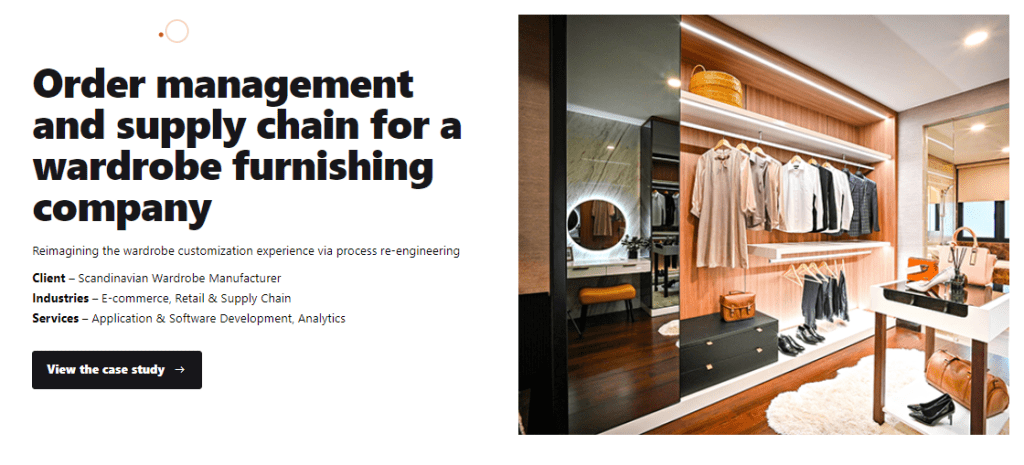With more competition online than ever before, it’s time for B2B suppliers to enhance their e-commerce game in order to stay competitive. However, many businesses are struggling to replicate their offline success online, putting them at danger of losing consumers.
Buyers are more inclined to purchase from websites and suppliers they trust, according to the 2022 B2B Buyer Report, which includes data from over 1,200 worldwide B2B buyers.
If customers have any doubts about a web store’s reliability or effectiveness, they are inclined to purchase elsewhere with a supplier who can deliver an e-commerce experience that meets their needs.
According to Neil Patel, if you lose existing business due to a bad e-commerce experience, it will cost you five times more to replace it with a new company acquisition.
Simply said, gaining your customers’ trust in both you and your e-commerce platform is critical to your success.
Kilowott Tip – Trust is a critical component in purchasing decisions, and with the B2B e-commerce industry becoming more congested than ever, suppliers must differentiate themselves from competitors to earn consumer trust and business.
What is B2B ecommerce?
B2B ecommerce is the process of marketing and selling products between two firms via the internet. The goal is simple: increase client reach while lowering cost-to-serve to increase revenue.
But where do you begin when it comes to B2B ecommerce, and what does the future hold?
The process of selling items and services directly between two firms is referred to as “business-to-business” (or B2B). B2B is a distinct business strategy from B2C, which involves businesses selling directly to consumers.
Through an online sales gateway, B2B ecommerce involves transactions between a manufacturer and a wholesaler, or a wholesaler and a retailer.
B2B ecommerce is one of the most rapidly expanding sales channels. According to some estimates, the global B2B ecommerce sector is worth more than $12 trillion, accounting for 13% of total B2B sales in the United States.
B2B ecommerce platforms’ innovation and technology have aided the movement. Traditional B2B sales and marketing operations were labor-intensive and manual. Through ecommerce automation, the introduction of digital commerce helps these organizations decrease costs and improve productivity.
B2B sellers work with:
- Wholesalers
- Large retailers
- Organizations such as schools or nonprofits
- Resellers
The question is how can a B2B seller gain a B2B buyer’s trust?
Years of handling complex B2B ecommerce projects have given us the understanding about various B2B buyer personas, their pain points and how to craft engagement solutions for them.
Don’t believe us? Ask our experts
What are the B2B buyer trust indices?
We looked at 200 UK B2B buyer websites to find out what they thought were the most important trust indicators, or the characteristics and services that B2B businesses should exhibit on their e-commerce sites to help their consumers trust them.
We categorized the “essentials,” “should haves,” and “recommended” in our (to be made proprietary) B2B customer trust index based on our findings.
Whether you’ve been selling online for years or are just getting started, the findings act as a helpful e-commerce roadmap to help B2B suppliers understand what they need to do to ensure their platform instils trust in their consumers.
Here, we take a closer look at these customer trust indicators, including why they’re important and how to use them effectively.
- Stock, Pricing And Product Information
For the B2B buyers we found that, stock accuracy and pricing accuracy were at the top of the list. Your customers demand precise product information and inventory levels on your web site, as well as prices displayed in the correct currencies.
To ensure that you meet client expectations, make sure your internal business systems are properly integrated with your online store.
What if I told you that Kilowott can build you a native ERP connection, whereas most mainstream e-commerce platforms are created separately from the ERP, resulting in silos between the two systems. This means it uses all of the data logic from the ERP operations to ensure that online store information is updated in real time, assuring complete reliability.
- Deep Diving Into Product Information
In our survey, a lack of product detail was cited as the top reason that would cause customers not to trust a web store. Buyers require product features to be comprehensive and display clear images and videos to help them make the right purchase.
This is especially important if you have a large or complex catalog.
When you consider machine parts, for example, even a slight size difference can mean that the product won’t meet the buyer’s needs, so it’s important to provide accurate, detailed specifications.
Ensuring your web store is seamlessly integrated with your ERP or product information management (PIM) system is key to ensure you’re always displaying accurate and up-to-date product information to your customers.
- Insights On Delivery & Tracking
B2B buyers anticipate realistic delivery timeframes and full visibility over shipment method and carrier when making a purchase. Ascertain that you can provide a customer portal with basic shipping and return information, as well as clear signposting to help if needed. Many consumers now demand a dependable monitoring technique that allows them to track their packages throughout their journey.
Your inventory management systems are significantly dependent on your ability to provide this transparency and accuracy throughout the shipping and fulfilment process, underscoring the necessity for seamless connectivity. - Web Store Ease of Access
Your web store should be intuitive and simple to access, regardless of how complicated your product offering is. Buyers should be able to quickly locate appropriate items and specifications, and the purchasing process should be as simple as possible.
Make sure your search function returns relevant results, and don’t forget to think about things like page structure and load speed.
According to a PwC research, online customers are willing to pay up to 16 percent extra for a better overall customer experience. 52 percent would pay more for increased online speed and efficiency, while 43 percent would pay more for more e-commerce convenience.
- Ease of Asking Questions
Make it as simple as possible for customers to ask for help or more information, and make sure you can reply fast. Chatbots use AI and machine learning to automate client communication and respond quickly, but don’t overlook the importance of human interaction! The ability to communicate with a human through supplier e-commerce sites is a key trust factor for more than a quarter of B2B buyers.
Avoid utilizing online contact forms with a lot of mandatory fields – according to the report, a protracted process to get inquiries answered, such as filling out a form, makes people distrust a supplier. - Payment Providers of Repute
Over a quarter (26%) of B2B buyers indicated an e-commerce site with unclear payment providers and alternatives would make them distrust the supplier in our survey. Customers are becoming more knowledgeable about how and where they spend their money on the internet.
Offer well-known and reliable payment providers to give your clients peace of mind about their money and payment information.
- Social Proof and Reference Cases
While traditional social proof relied exclusively on word of mouth and personal contacts, the internet format expands your options by allowing you to collect and distribute customer evaluations, testimonials, and case studies on your website, allowing you to reach a wider audience.
Reviews can also provide feedback, allowing you to see where your products and services are meeting client expectations and where you need to improve.
According to a key B2B buyer study, customer testimonials are a top trust factor for 23 percent of buyers, while reference examples are highlighted by 20 percent.
Due to a lack of social proof, your buyers may be hesitant to purchase from you and instead go to a company with similar products and outstanding ratings.
You have more trustworthy sourcing by bringing home manufacture back into play. It can, however, have an impact on pricing and labor costs, so bear that in mind.
- Aesthetically Pleasing
A quarter of B2B purchasers cited out-of-date or inadequate website design as a reason they wouldn’t trust a supplier’s online store.
A clean and professional design with consistent branding throughout is more likely to convert customers. Consider optimizing photos and creating dynamic page designs with a variety of content blocks instead of text-heavy pages, which are likely to turn off time-crunched shoppers.
Check read our blog post How to Improve Your B2B Website Design for more practical advice and considerations on how to improve your B2B website design.
- Personalization
Because of their B2C online buying experiences, your buyers have high expectations for your web store, and customization is something they expect to see repeated in B2B.
According to an Epsilon poll, 80 percent of consumers are more likely to buy when brands provide individualized experiences.
According to Accenture, over half of shoppers (48%) have left a website without purchasing because they felt it was inadequately curated for them.
Personalization demonstrates to your customers that they matter to you and that you appreciate their business. The following features and functions can go a long way toward demonstrating to your customers that you are aware of their needs:
- Keeping particular details and delivery deadlines in mind
- Allowing them to easily trigger and support recurrent purchases.
- Personalized savings and exclusive offers
- Personalized product recommendations based on prior purchases
- Explainer Videos
Breaking down your complex products or procedures into simple, visually appealing, and easy-to-follow explainer movies may be extremely beneficial to your time-crunched clients, as well as a critical aspect instilling trust in your online offering (identified by 19 percent of B2B buyers).
According to marketing research, at least 96 percent of potential buyers have watched an explainer video to learn more about a brand they’re interested in, and 85 percent of potential customers are more inclined to buy from a company that offers one.
Kilowott’s animated videos have powered stories through 2D animation, 3D animation, explainers videos and more. Let’s chat!
Including these important features and functions in your roadmap can help you earn customers’ trust in your brand, products, and services, allowing you to build long-term, mutually beneficial business partnerships.









